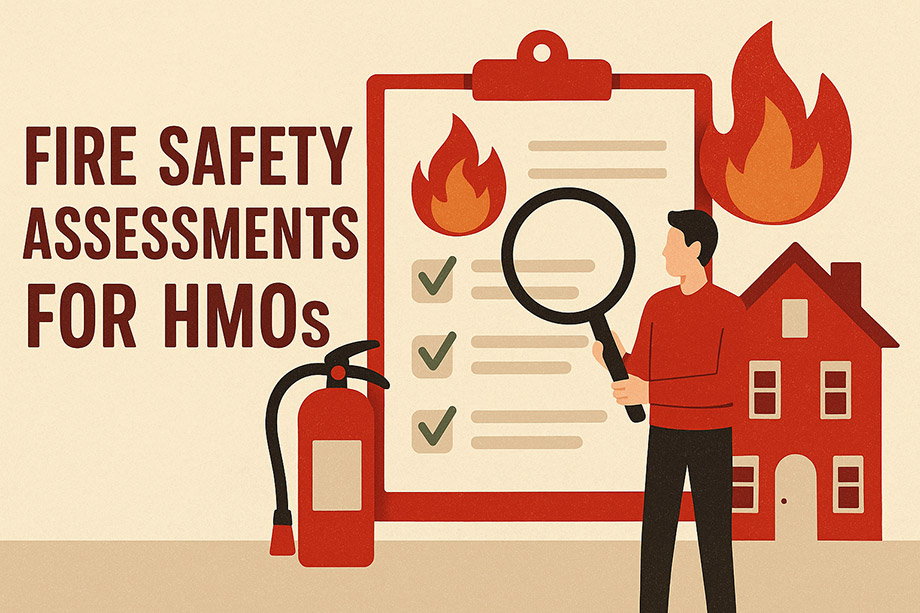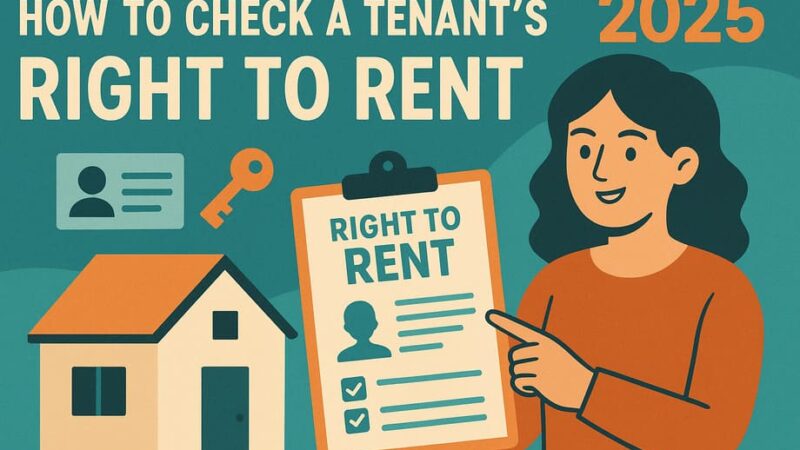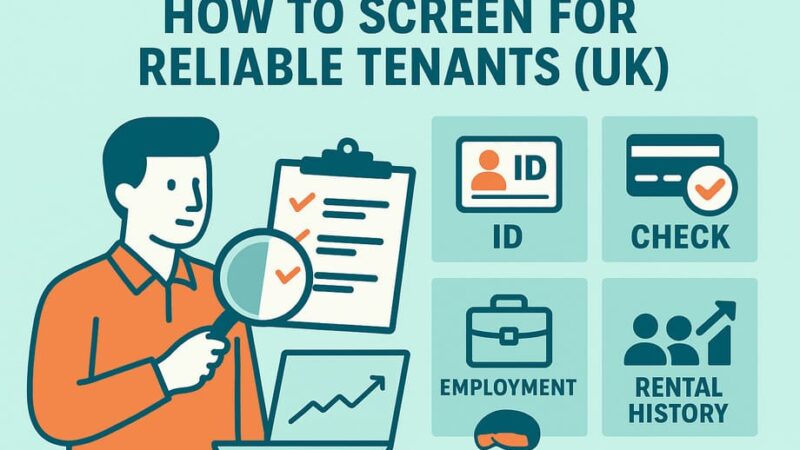Fire Safety Assessments for HMOs – The Complete UK Landlord’s Guide to Compliance and Safety

As a landlord managing a House in Multiple Occupation (HMO), ensuring fire safety isn’t just about protecting your tenants, it’s a legal requirement that can protect your business, reputation, and investment. With the Regulatory Reform (Fire Safety) Order 2005 requiring all licensed HMOs to have a fire risk assessment, understanding your responsibilities is crucial for successful property management.
What is a Fire Risk Assessment for HMOs?
A fire risk assessment for HMOs is a comprehensive evaluation designed to identify potential fire hazards, assess risk levels, and establish preventive measures within your property. This crucial assessment ensures compliance with fire safety regulations while protecting both your tenants and your property investment.
Unlike standard rental properties, HMOs present unique challenges. Your tenants may not know each other well, reducing the likelihood of mutual assistance during emergencies. The higher density of residents and shared facilities create additional risk factors that require careful consideration.
Legal Requirements for HMO Fire Safety Assessments
Who Needs a Fire Risk Assessment?
The ‘responsible person’, who could be the landlord/licence holder or an agent with full management control, must carry out and regularly review a fire risk assessment. This applies to:
- All licensed HMOs (properties housing 5+ people from different households across 3+ storeys)
- Smaller HMOs in areas with additional licensing schemes
- Properties with shared facilities rented to 3+ tenants forming separate households
Key Legislation Governing HMO Fire Safety
Your fire risk assessment must comply with several pieces of legislation:
- The Regulatory Reform (Fire Safety) Order 2005: Mandates fire risk assessments and ongoing review
- Housing Act 2004: Establishes HMO licensing requirements and safety standards
- Management of Houses in Multiple Occupation (England) Regulations 2006: Details specific responsibilities for licence holders
It is an offence not to carry out a fire safety risk assessment and the responsible person may be prosecuted, with enforcement typically handled by local fire and rescue services.
Essential Components of an HMO Fire Risk Assessment
1. Hazard Identification
A thorough assessment must identify all potential fire hazards within your property, including:
- Electrical systems: Faulty wiring, overloaded circuits, and damaged appliances
- Kitchen equipment: Cooking facilities, extraction systems, and storage areas
- Heating systems: Boilers, radiators, and portable heaters
- Storage areas: Combustible materials and waste disposal
- Structural elements: Fire separation between units and escape routes
2. Risk Evaluation
Each identified hazard must be evaluated considering:
- Probability of fire ignition
- Potential for fire spread
- Number of people at risk
- Vulnerability of occupants
- Adequacy of existing safety measures
Risks are typically classified as low, medium, or high priority.
3. People at Risk Assessment
Your assessment must consider all individuals who could be affected, including:
- Current tenants and their guests
- Maintenance staff and contractors
- Emergency service personnel
- Neighbours in adjacent properties
4. Existing Control Measures Review
Evaluate the effectiveness of current fire safety provisions:
- Fire detection and alarm systems
- Emergency lighting
- Fire doors and escape routes
- Firefighting equipment
- Emergency procedures and signage
Fire Safety Standards for HMO Properties
Fire Detection and Warning Systems
Modern HMOs require comprehensive fire detection systems. The LACORS (Local Authorities Coordinators of Regulatory Services) guidelines recommend:
- Mains-wired and interlinked automatic fire detection (AFD) systems as the minimum requirement
- Installation and testing by BAFE-accredited contractors
- Smoke alarms in bedrooms and corridors
- Heat alarms in kitchens and other high-risk areas
- Regular testing and maintenance schedules
Fire Doors and Escape Routes
Escape route protection is critical in HMOs where tenants may be unfamiliar with each other and the property layout:
- Fire doors with appropriate fire rating (typically FD30 for 30-minute protection)
- Intumescent strips and cold smoke seals
- Self-closing mechanisms or door closers
- Thumb-turn locks for easy escape without keys
- Clear, unobstructed escape routes with appropriate signage
- Emergency lighting along escape routes
Firefighting Equipment
Strategic placement of firefighting equipment includes:
- Fire extinguishers appropriate to identified risks
- Fire blankets, particularly in kitchen areas
- Annual testing and maintenance by accredited contractors
- Clear access and appropriate signage
Common Fire Safety Challenges in HMOs
HMO properties face specific challenges that standard residential assessments may not fully address:
Tenant Behaviour and Familiarity
Unlike family homes, HMO tenants may not communicate regularly or assist each other during emergencies. This requires:
- Clear emergency procedures displayed throughout the property
- Individual responsibility for fire safety awareness
- Robust early warning systems to alert all occupants
Electrical Safety Concerns
Most fires within blocks of flats begin in individual flats, with electrical faults from overloaded sockets being the chief reason. Address this through:
- Regular electrical inspections and testing
- Adequate socket provision to prevent overloading
- Clear guidance on electrical appliance use
- Annual Portable Appliance Testing (PAT) for HMO properties
Locked Doors and Access Issues
Private bedrooms in HMOs are typically locked, potentially complicating escape routes:
- Install thumb-turn locks for emergency egress
- Ensure escape routes don’t pass through private areas
- Provide alternative escape routes where possible
- Consider the vulnerability of occupants in upper floors
Choosing the Right Fire Risk Assessor
While you can conduct a fire risk assessment yourself, professional assessment offers significant advantages:
Qualifications to Look For
- Experience in residential property fire risk assessment
- Knowledge of LACORS framework
- Understanding of local authority enforcement approaches
- Relevant professional accreditations and insurance
The Professional Assessment Process
A competent assessor will:
- Conduct a thorough site inspection examining all areas of the property
- Apply LACORS guidelines consistent with local authority approaches
- Provide graded recommendations distinguishing between best practice and mandatory requirements
- Deliver a comprehensive report with justified recommendations and timelines
- Offer ongoing support for implementation and review
Review and Maintenance Requirements
UK law mandates that fire risk assessments are renewed on a regular basis, though no specific legal timeframe is prescribed. Best practice recommendations include:
Regular Review Schedule
- Annual reviews for most HMO properties
- Immediate review following any significant changes to the property
- Post-incident review following any fire safety incidents
- Ongoing monitoring of fire safety equipment and procedures
Triggers for Assessment Updates
- Changes in property layout or use
- Installation of new equipment or systems
- Changes in tenant numbers or vulnerability
- Incidents or near-misses
- Changes in relevant legislation or guidance
Consequences of Non-Compliance
Failing to maintain adequate fire safety standards can result in severe consequences:
Legal Penalties
- Unlimited fines for fire safety offences
- Potential imprisonment for serious breaches
- Prohibition notices preventing property use
- HMO licence revocation or refusal
Financial Implications
- Insurance policy invalidation
- Compensation claims from affected tenants
- Property damage and loss of rental income
- Costs of emergency accommodation and remedial works
Reputation and Business Impact
- Difficulty obtaining future HMO licences
- Negative publicity affecting tenant recruitment
- Increased insurance premiums
- Potential ban from property management
Best Practices for HMO Fire Safety Management
Proactive Maintenance
- Schedule regular equipment testing and maintenance
- Maintain detailed records of all safety activities
- Address identified issues promptly and completely
- Stay informed about regulatory changes and updates
Tenant Communication
- Provide clear fire safety information to all new tenants
- Display emergency procedures prominently throughout the property
- Conduct periodic safety reminders and updates
- Establish clear reporting procedures for safety concerns
Professional Support
- Engage qualified professionals for complex assessments
- Maintain relationships with accredited contractors
- Seek specialist advice for unusual or challenging properties
- Consider ongoing consultancy support for larger portfolios
Conclusion: Protecting Your Investment and Your Tenants
Fire safety in HMOs requires a comprehensive, professional approach that goes beyond basic compliance. By conducting thorough fire risk assessments, implementing appropriate safety measures, and maintaining ongoing vigilance, you protect both your tenants’ welfare and your property investment.
The complexity of HMO fire safety regulations makes professional assessment a wise investment. Working with qualified assessors who understand the LACORS framework and local authority expectations ensures your property meets current standards while identifying potential issues before they become costly problems.
Remember that fire safety is an ongoing responsibility, not a one-time requirement. Regular reviews, proactive maintenance, and continuous improvement of your safety provisions will ensure your HMO remains compliant, safe, and profitable for years to come.
This guidance provides general information about HMO fire safety requirements. For specific advice about your property, consult with qualified fire safety professionals and your local authority’s HMO licensing team.
Last Updated on July 23, 2025 by James Cartwright







